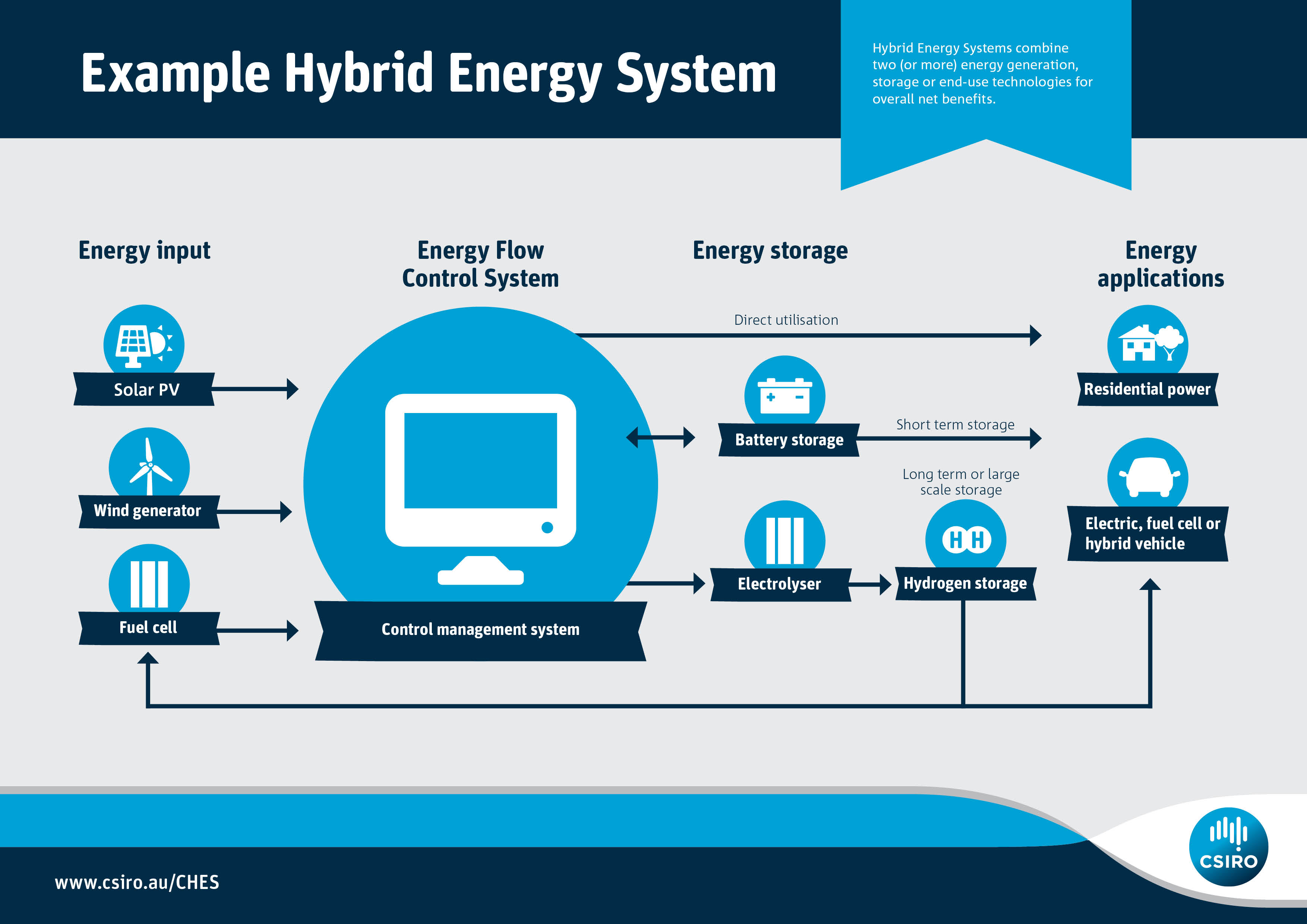What’s powering your home? Are you connected to the electricity grid? Do you have solar panels? A fuel cell? Perhaps a backyard wind turbine? It’s totally feasible to check all of these boxes: this is what's called a ‘hybrid energy system’.

Solar and wind power side by side.
What’s powering your home? Are you connected to the electricity grid? Do you have solar panels? A fuel cell? Perhaps a backyard wind turbine? It’s totally feasible to check all of these boxes: this is what’s called a ‘hybrid energy system’.
Hybrid energy systems combine two or more forms of energy generation, storage or end-use technologies, and they can deliver a boatload of benefits compared with single source systems.
Variety is the spice of life, so why limit ourselves to just one energy source or storage option? In these cases, hybrid energy systems are an ideal solution since they can offer substantial improvements in performance and cost reduction, and can be tailored to varying end user requirements.
Configurations could include renewable or non-renewable energy sources, electrical and chemical energy storage and fuel cells, often connected via a smart grid.
They have the potential to dramatically reduce cost and emissions from energy generation and distribution for households, but can be held back by the limitations of individual power generation or storage technologies – this may include cost, inconsistent supply (like interrupted solar on a cloudy day), etc.
This means there is substantial demand for hybrid energy solutions to lower cost and improve efficiency, while still meeting performance requirements.
So to meet this demand, we’ve established a Centre for Hybrid Energy Systems at our Clayton site in Victoria. It’s a state-of-the-art facility showcasing our substantial expertise and capability in integrating energy storage, renewable energy, hydrogen and fuel cell technologies, fuel processing, systems design and construction.
Here’s an example hybrid energy systems whereby solar, wind and a fuel cell provide the energy for your house and/or car.

According to our research Fellow Dr Sukhvinder Badwal, there’s now an increased availability of renewable and modular power generation and storage technologies such as batteries, fuel cells, and household solar.
“These technologies are becoming cost competitive, but the key to greater use is to combine them in connected hybrid systems,” Dr Badwal said.
“By doing this, we can offer substantial improvements in performance and cost.”
We’re keen to put our heads together with industry partners, and the collaborative space will be used to share the benefits of emerging hybrid energy systems with industry and government to maximise the value of local energy sources.
The Centre is underpinned by our research across low-emission energy technologies that create value for industry and households and provide the knowledge which will help guide Australia towards a smart, secure energy future. Check out our other energy research here.


Pingback: Your Complete Guide to Off-Grid Solar Power Systems - Our Solar Energy